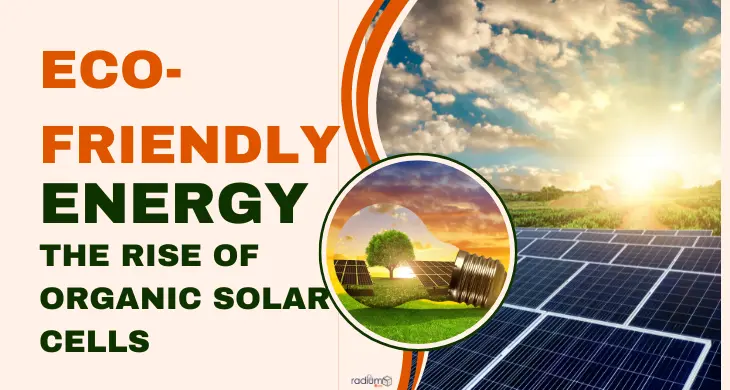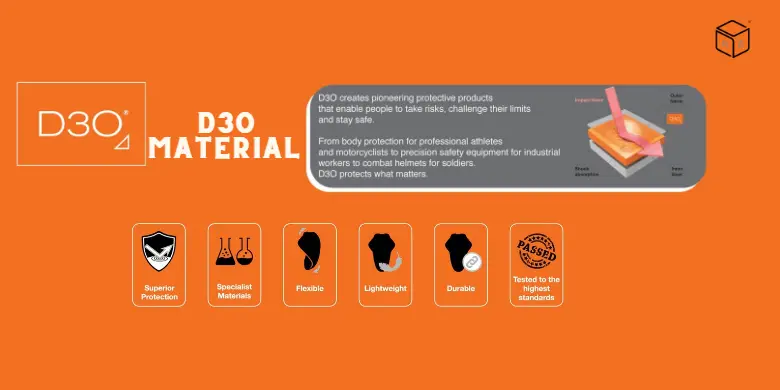In a world increasingly turning its gaze towards sustainable and eco-friendly energy solutions, one technology emerges as a beacon of promise: organic solar cells. These Innovative photovoltaic devices are making waves in the renewable energy landscape, offering a pathway to harness clean, green power from the sun. In This Exploration, we delve into the ascent of organic solar cells, their environmental footprint, and their potential to revolutionize energy generation and consumption. Join Us on a journey to uncover how this captivating technology is shaping the future of clean energy.
The Core of Organic Solar Cells:
Organic Solar Cells, Known as Organic Photovoltaics (OPV) or Organic Photovoltaic Cells, represent a Pioneering and Environmentally conscious approach to tapping into Solar Energy. Composed of organic materials, Like Polymers or Small organic molecules, These Photovoltaic devices serve as a greener & more sustainable alternative to traditional silicon-based solar panels. At their heart, organic solar cells adhere to the fundamental principle of photovoltaics, converting sunlight into electrical energy. However, their distinctive composition and versatility set them apart. These cells are usually lightweight, flexible, and semi-transparent, enabling integration into diverse applications. From solar-powered attire to portable chargers and architectural installations, the adaptability of organic solar cells knows no bounds.
The essence of organic solar cells lies in their dedication to sustainable energy generation and their suitability for unconventional surfaces and structures. Unlike conventional rigid and heavy silicon solar panels, organic solar cells unlock a realm of possibilities for seamlessly incorporating solar power into everyday life.
Organic semiconductors serve as the vital ingredients in these solar cells, efficiently capturing sunlight and transforming it into electrical current. These materials offer numerous advantages, including cost-effective manufacturing, lightweight attributes, and the capacity to produce solar cells through economical printing methods. The manufacturing process of organic solar cells often entails the deposition of thin layers of organic materials onto flexible substrates, like plastic or metal foils. This lightweight and flexible design renders them ideal for applications where traditional solar panels prove impractical or aesthetically displeasing.
The Environmental Impact of Organic Solar Cells:
The use of Organic Photovoltaics (OPV), also known as Organic Solar Cells, is revolutionizing how we capture solar energy and having a significant positive impact on the environment. As we seek to transition to Greener & More sustainable energy sources, There are various environmental advantages of organic solar cells. Here, We examine how today’s advanced solar cells are fostering a future that is more ecologically friendly and sustainable:
Reduced Carbon Footprint: Since organic solar cells are constructed of organic materials like Polymers or Tiny organic molecules, They frequently have a lesser carbon footprint than traditional silicon solar panels. As a result, Less greenhouse gas is emitted during the production of organic solar cells, which helps to slow down climate change.
Lower Energy Consumption: The manufacturing process of organic solar cells typically requires less energy compared to conventional solar panels. The reduced energy consumption during production translates to a lower environmental impact.
Lightweight and Versatile: Organic solar cells are lightweight, flexible, and semi-transparent, offering versatility in their integration into various applications. They can be used in portable solar chargers, solar-powered clothing, architectural installations, & more. This adaptability promotes the widespread adoption of clean energy in creative & aesthetically pleasing ways.
Sustainability & Recyclability: Many of the components used in organic solar cells are recyclable, which promotes a life cycle that is More environmentally friendly. Additionally, Research into even more ecologically friendly materials & manufacturing processes has been sparked by the invention of organic photovoltaics.
Lower Environmental Impact at End of Life: Organic solar cells have the potential to have a lower environmental impact at the end of their life cycle compared to traditional panels. The ability to recycle and upcycle materials helps to reduce waste and e-waste concerns.
Local Energy Production: The flexibility of organic solar cells enables distributed energy generation, allowing users to produce clean energy right where it’s needed. This can reduce transmission losses & the environmental impact of long-distance energy transport.
Organic solar cells still have several difficulties, such as poorer energy conversion efficiency when compared to silicon solar panels, even if they have made significant strides in terms of their environmental impact. Though advances in efficiency and robustness are being driven by ongoing research and invention, organic solar cells are becoming a more appealing and environmentally benign option for the generation of sustainable energy.
Revolutionizing Solar Technology with Organic Solar Cells:
The development of organic solar cells has made them a revolutionary force to be reckoned with in the rapidly developing field of solar technology. These innovative photovoltaic systems are revolutionizing solar energy production & bringing a host of fascinating advantages. We examine how organic solar cells are transforming the future of renewable energy in the following ways:
Efficiency & Flexibility: Organic solar cells are renowned for their flexibility, lightweight nature& ability to be integrated into a wide range of surfaces, from building materials to wearable tech. Their adaptability opens new doors for innovative solar solutions & creative energy harvesting.
Sustainability & Environmental Impact: The materials used in organic solar cells are often eco-friendly and have a lower carbon footprint compared to traditional silicon-based solar panels. This emphasis on sustainability makes organic solar cells a crucial player in the global pursuit of greener energy solutions.
Distributed Energy Generation: With their versatility and portability, organic solar cells empower users to generate energy locally. This can be especially advantageous for communities in remote or off-grid areas, reducing their reliance on centralized power systems and lowering transmission losses.
Recyclability & Reduced Waste: Organic solar cells often employ recyclable materials, contributing to a more sustainable product life cycle. This focus on waste reduction aligns with the growing movement towards responsible and environmentally conscious technology.
Innovation in Aesthetics: The aesthetic appeal of organic solar cells is undeniable. They enable the creation of solar installations that not only generate clean energy but also serve as visually striking architectural elements and fashion statements.
Research and Development: Continuous research and development efforts are improving the efficiency and longevity of organic solar cells. As advancements are made in energy conversion rates and durability, organic photovoltaics are becoming increasingly competitive with traditional solar technologies.
Empowering Energy Independence: By allowing individuals and communities to harness the power of the sun wherever and however they choose, organic solar cells promote energy independence and resilience.
The Transformative potential of organic solar cells is evident in their Versatility, Sustainability & Positive environmental impact. While they currently face challenges related to energy conversion efficiency, ongoing research and innovation are paving the way for even more efficient and durable organic solar cell technologies.
Challenges and Prospects in the World of Organic Solar Cells:
While organic solar cells hold immense promise for sustainable energy solutions, they also face certain challenges and offer prospects that are vital for their continued development and adoption. Let’s explore the key challenges and prospects in the exciting world of organic solar cells:
Challenges:
Efficiency Hurdles: One of the primary challenges is the efficiency of organic solar cells. Traditional silicon-based solar panels currently outperform organic counterparts in terms of energy conversion rates. Researchers are actively working to enhance the efficiency of organic cells to make them more competitive.
Durability & Longevity: Organic materials can be sensitive to environmental factors, which may affect their Long-Term performance. Ensuring the durability & stability of organic solar cells under various conditions is a significant challenge.
Scalability: Mass production of organic solar cells at a competitive cost remains a challenge. Developing scalable manufacturing processes and supply chains is essential for widespread adoption.
Energy Storage Integration: Organic solar cells often generate energy intermittently, depending on weather and daylight conditions. Integrating efficient energy storage solutions is crucial to provide consistent power availability.
Environmental Impact of Materials: While organic materials are generally more eco-friendly than traditional photovoltaics, the production and disposal of these materials can still have environmental consequences. Minimizing the environmental impact throughout the life cycle of organic cells is a challenge.
Prospects:
Sustainability Focus: The sustainable nature of organic solar cells, which often use non-toxic and abundant materials, positions them as a key player in the transition to greener energy sources.
Adaptability and Aesthetics: The flexibility and aesthetic possibilities of organic cells open up new applications in design & architecture. This adaptability is highly attractive for incorporating solar technology seamlessly into our surroundings.
Distributed Energy Generation: Organic solar cells empower users to generate their own energy, reducing dependence on centralized grids and promoting energy independence. This prospect is especially beneficial for remote or underserved communities.
Ongoing Research & Development: Organic solar cell technology continues to evolve rapidly. Ongoing research & development efforts are improving the efficiency & performance of these cells, making them more competitive in the solar market.
Reduced Carbon Footprint:The Emphasis on Sustainability, Recyclability & the use of earth-friendly materials in organic solar cells aligns with Global efforts to reduce the carbon footprint of energy production.
Innovation Potential: The potential for innovation in organic photovoltaics is vast. As the technology matures, We can expect to see more creative & efficient applications in various industries.
Organic solar cells hold the promise of sustainable, distributed energy generation and innovative design possibilities. While they face challenges such as efficiency and durability, their prospects for a cleaner, greener, and more resilient energy future are bright. Ongoing research, technological advancements, and a commitment to environmental responsibility are driving the growth of organic solar cells in the renewable energy landscape.
Adoption and Future Outlook of Organic Solar Cells:
The adoption of organic solar cells has been steadily growing as a result of their unique advantages and evolving technology. Here, we delve into the current adoption trends and the promising future outlook for organic solar cells:
Adoption Trends:
- Research and Development Investments: Governments, academic institutions, and private companies are investing heavily in organic solar cell research and development. This support is driving innovation and helping organic cells become more competitive.
- Integration in Building Materials: Organic solar cells are increasingly being incorporated into building materials like windows, façades, and roofing. This integration allows for energy generation while maintaining aesthetics and functionality.
- Consumer Electronics: Organic solar cells have found applications in small-scale consumer electronics such as solar chargers and wearable devices. This market segment showcases the potential for personalized, eco-friendly power sources.
- Solar Textiles: The integration of organic solar cells into textiles and fabrics offers the prospect of wearable energy sources, including solar-powered clothing and accessories.
- Off-Grid Solutions: Organic solar cells are being used in off-grid and remote locations to provide sustainable power where traditional grid access is limited.
- Sustainability Initiatives: The global push for sustainability is driving interest in organic photovoltaics due to their eco-friendly materials and production processes.
Future Outlook:
- Increased Efficiency: Ongoing research and development efforts are expected to significantly enhance the efficiency of organic solar cells, closing the performance gap with traditional silicon-based cells.
- Large-Scale Integration: Organic solar cells are poised to be integrated on a large scale in urban environments and smart cities, providing both energy generation and aesthetic value.
- Eco-Friendly Energy Transition: As the world shifts towards cleaner and sustainable energy sources, organic solar cells will play a pivotal role in the transition, helping reduce the carbon footprint of energy production.
- Flexible Applications: The adaptability of organic solar cells will lead to innovative applications in various industries, including transportation, agriculture, and architecture.
- Global Accessibility: Wider adoption and cost-competitive organic solar cells will democratize access to renewable energy, especially in regions with limited infrastructure.
- Innovation and Collaboration: Collaborations between researchers, businesses, and governments will drive innovation and support the development of more efficient and durable organic solar cells.
- Sustainable Materials: The emphasis on sustainable and biodegradable materials will be central to the future of organic photovoltaics, aligning with environmental preservation efforts.
Frequently Asked Questions:
1,What are organic solar cells, and how do they work?
Organic solar cells are devices that convert sunlight into electricity using organic materials. They operate based on the photovoltaic effect, where sunlight excites electrons to generate an electric current. Unlike traditional solar cells, organic solar cells use organic materials for light absorption and charge transport.
2. How do organic solar cells differ from conventional solar panels?
Organic solar cells differ in terms of materials and structure. They use organic compounds as the active layer, making them lighter and potentially more flexible. However, they typically have lower efficiency than traditional silicon-based solar panels.
3. What is the environmental impact of organic solar cells?
Organic solar cells have a lower carbon footprint during production and offer the potential for sustainable energy generation. They are more environmentally friendly due to reduced energy consumption in manufacturing and disposal.
4. Are organic solar cells suitable for residential use?
Organic solar cells are gaining traction for residential applications due to their lightweight and flexible nature. While they may not provide the same efficiency as traditional solar panels, they are ideal for specific use cases and can be integrated into various settings.
5. What challenges do organic solar cells face, and how are they being addressed?
Challenges include lower efficiency and stability issues. Ongoing research focuses on improving the efficiency and stability of organic solar cells through innovative materials and technologies.
Conclusion:
As awareness of the environmental impact of energy production grows, the demand for cleaner and greener energy sources like organic solar cells continues to rise. These eco-friendly technologies have the potential to transform various industries, from wearable technology to IoT devices, making solar energy more accessible and versatile.
The future of organic solar cells looks promising, as researchers and manufacturers work together to enhance their efficiency, durability, and cost-effectiveness. As individuals, businesses, and governments continue to support and invest in these innovative technologies, we move closer to a more sustainable and environmentally conscious energy landscape. With eco-friendly solutions like organic solar cells, we’re not just generating power from the sun; we’re generating a brighter and cleaner future for generations to come.




